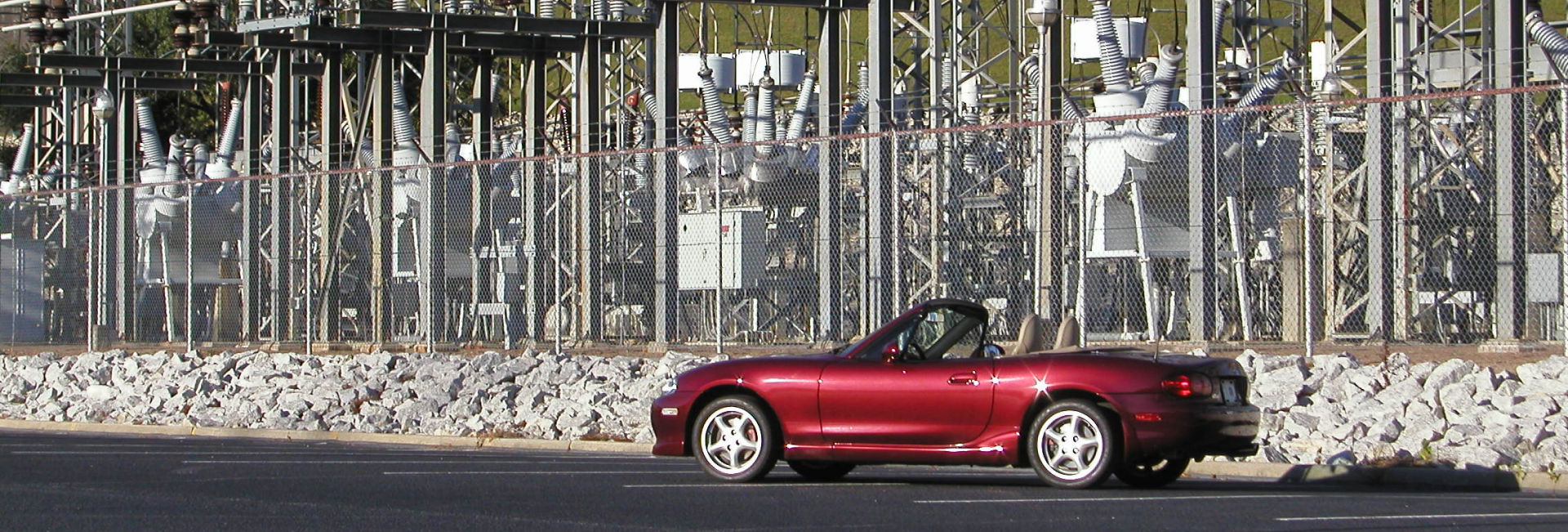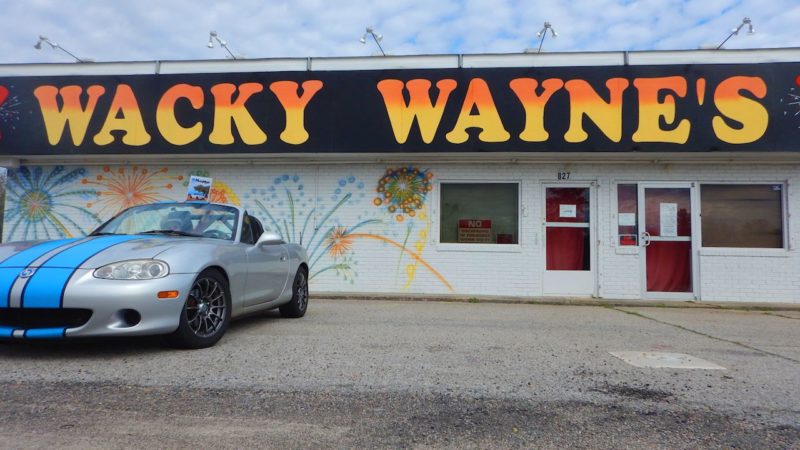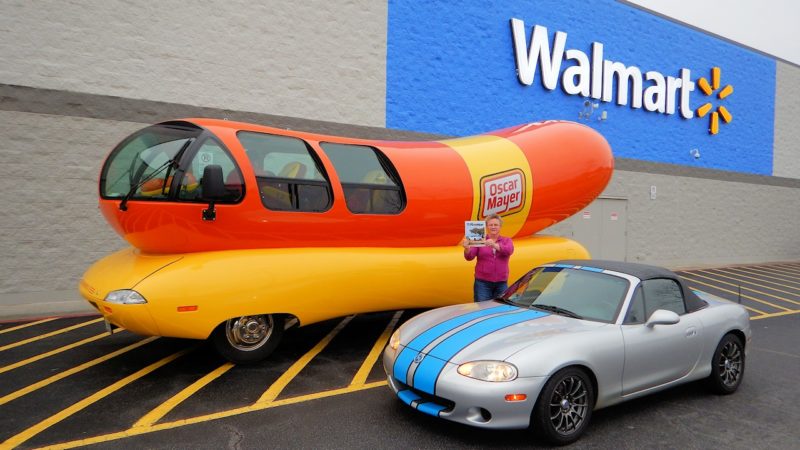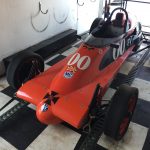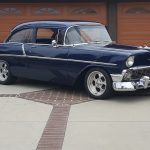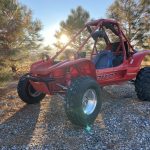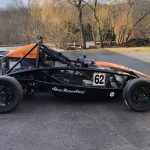Because I was a fairly early adopter of the Miata and joined the now long defunct Miata Club of America in the fall of 1989, I had a complete collection of the official Club publication, Miata Magazine. I used to take an article out of the magazine and reformat it for the Masters Miata Club website as each issue became twenty-five years old. I said “had” earlier because once I’d republished an article I dispose of that issue. The Master’s Club site still exists, but content has mostly stopped now because they moved to a FaceBook Group after I moved to Oregon. I thought maybe I might continue the tradition here, after all, I still have over 8 years worth of glossy Miata history sitting here gathering dust.
Leaning Against the Wall
By Norman Garrett III
Founder Miata Club of America
Concept Engineer Miata Project
There is a wall against which each car leans when it takes a corner, no matter what the speed. That is the wall of tire adhesion. I lean against that wall as often as I can, something inside of me likes the feel of it.
Mountain roads offer the most practice – narrow walls with tilting floors. Lean to the left, lean to the right, always the tension. I am never quite comfortable traveling down straightaways in the mountains, I like something to brace myself against. Sometimes it’s a perfect sweeper to the right, sometimes a tight hairpin to the left. Either way, I like the security of the seat bolsters pressing against my ribs. It lets me know that I’m driving a sports car. In a straight line most any car feels the same. Lean against the wall and the pedigree is clear.
We tested a lot of sports cars while developing the Miata. Some had very predictable “walls” during hard cornering. You could press right up against the chassis and tire limit and stay there all day. Other cars, cars that should have known better, could scare the sushi out of you.
The Porsche 911 has long had a reputation as a wily car at the limit. We had a black Cabriolet version in Hiroshima for a convertible top study (Nice top, takes 14 hours to build, five minutes to put up. Mazda found a better way on both ends). Taking the car out on the proving grounds was always a treat, if you knew the ropes. We called the 911 the “spider” because it knew when to bite.
Come into a corner hot, brake hard in a straight line, turn in gently for a late apex, slowly lift the throttle, clip the apex and accelerate out. This routine worked great on most any rear drive car. Try it on a 911 and you’ll be clipping roadside vegetation with your rear bumper. The rear end swings wide and then around in a public display of expensive over-steer.
The problem comes from the 911’s rear suspension – it likes to have power put to it. That takes foreknowledge and guts. I tried it according to Stuttgart and found that it works, and works well. Come into the corner hot, brake in a straight line, turn in for a late apex, squeeze the throttle open long before the apex, have it fully floored at the apex and hold on. They told me to try for 10% more throttle than I thought I could handle. The car loved it, I was forced up against the door panel by the g-force. Once I teased the spider by lifting the throttle at the apex. Pulled back a bloody stub of an ego, redecorating the Miyoshi test track with spirographic black lines.
We wanted to know these sorts of things so the Miata would have performance, but not quirks. Most car manufacturers dial in a fair amount of under-steer (the front wheels turn, but the car follows lazily behind) for safety reasons. Almost anyone can deal with a car that wants to go wide in a turn. Few drivers can react quick enough to a car that dives to the inside of a turn, rear wheels skidding. Somewhere in between is a safe but fun sports car setting that excites the owners, but not the lawyers. For the Miata, we wanted to keep the “edge” but without the cliff.
We tested Lotus’, MG’s, Alfa’s, Porsche’s, Corvettes, etc. to find how others had done it. Some were great at the limit. Many were disappointing, a few were scary. Some well-respected cars lulled you into a sense of complacency that was false, and therefore dangerous.
The Porsche 944 was one of these, an interesting contrast to its older brother. Hailed as “the best handling car” at the time by Car and Driver magazine, the 944 was a popular car in its day. It was much easier to set up in a turn than the 911 and yielded great fun for the average driver. Owners lauded its “predictable and stable” handling. Problem was, its “wall” had a trap door.
One test trip had taken us to our favorite loop up in the high desert of Southern California. There is a fifteen mile public road course near Pearblossom we would test cars and tires on and against. On one trip we had one of many test drivers from Mazda japan who fell in love with the 944 in our test fleet. Lap after lap he circled the course, driving diligently but hard, looking for any holes in the “wall”. Each time he would stop, he said he was feeling something on the sweeping ninety-degree turn at the back of the course, but he had not found it yet. We sent him out again and again, like some Costeau ship sending divers down for treasure. At the end of the day, we sent him out for one last lap as the light was beginning to fade. Off he sped in search of some chink in the Porsche armor. We knew he had found it when he came back thirty minutes later – on foot.
It turns out that if you push a 944 to its limit, it can bite. Mazda rolled two more 944’s into balls during the later development of the RX-7. It appears that the trap door moves around on the 944.
Testing continued on all sorts of cars. Surprisingly, one of the best cars came from in-house: the second generation RX-7 Turbo. With stiffer bushings and shock absorbers, the RX-7T’s balance was very nice, the wall was broad and strong. You could lean right up against it any time, it was an easy wall to find and a hard one to upset. To accomplish this, Mazda had created over 120 patentable ideas to stabilize the rear suspension. Don Runkle of Chevrolet called it “complicated”. Buyers called it wonderful.
When it came time for the Miata, classical choices were the order of the day. By using a double wishbone suspension at all four corners and carefully balancing the weight distribution front to rear (and side to side), the Miata needed zero patents to achieve the same goal.
Particularly with a good set of tires, the Miata’s “wall” is broad and tall, and always where you expect it to be. Lift off of the throttle in the middle of a hard corner? No problem, the Miata will take up just a bit of slack in your radius. Punch the throttle any time you like, the chassis will take heed and move along nicely, even if you’ve hot-rodded your engine.
The Miata combines two of the most difficult traits in a sports car, tossability and predictability. That makes for the essence of spirited driving for us enthusiasts and trophy material for hundreds of dominating showroom stock racers. Pretty good for an affordable sports car, eh?
So next time you’re on a curvy road or cloverleaf, remember this discussion. Gently play around, lean up against the wall a bit. Years of development and a few sacrificial Porsches have paved the way for you to have fun, safely.
Copyright 1994, Miata Magazine. Reprinted without permission.
